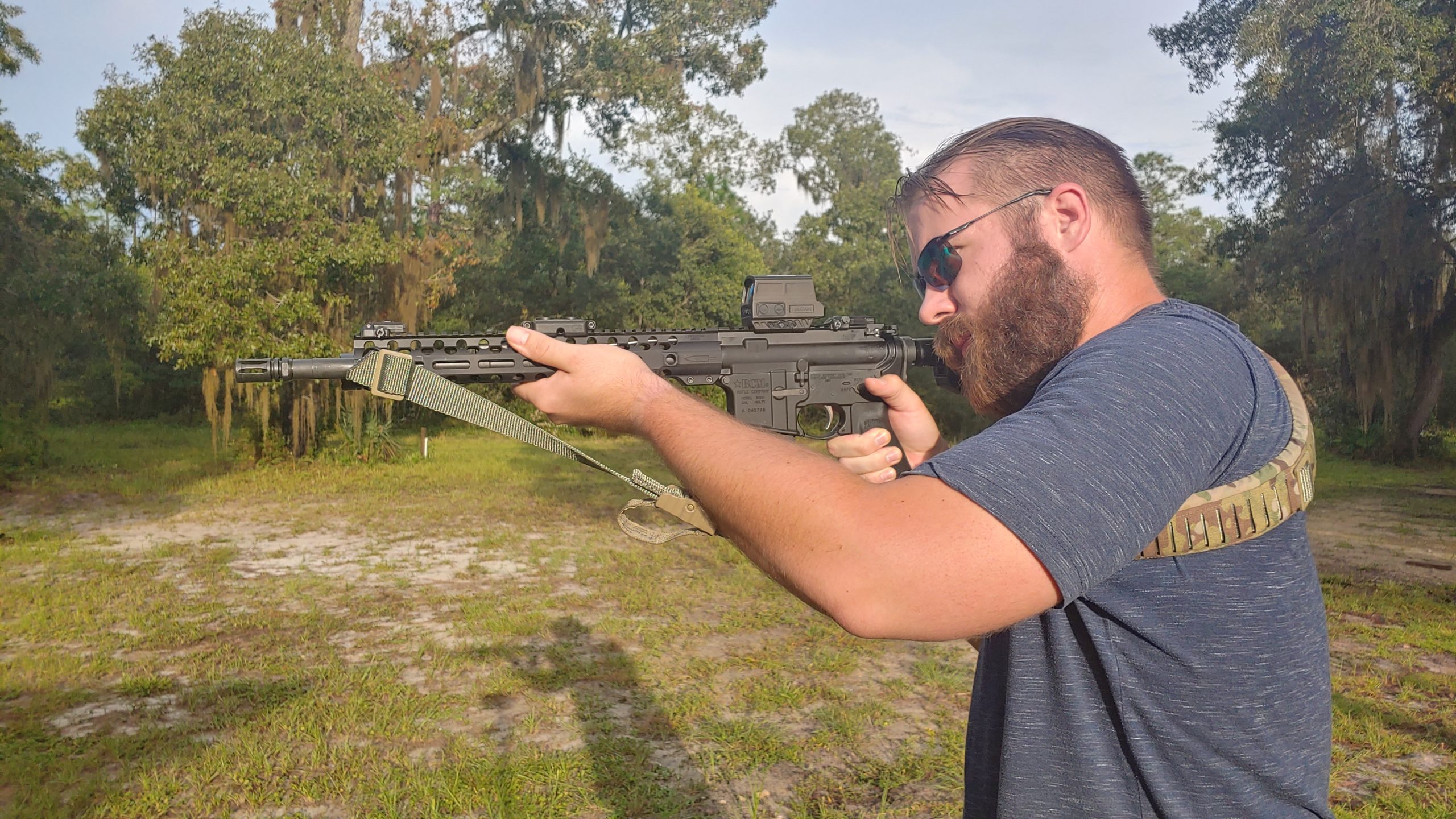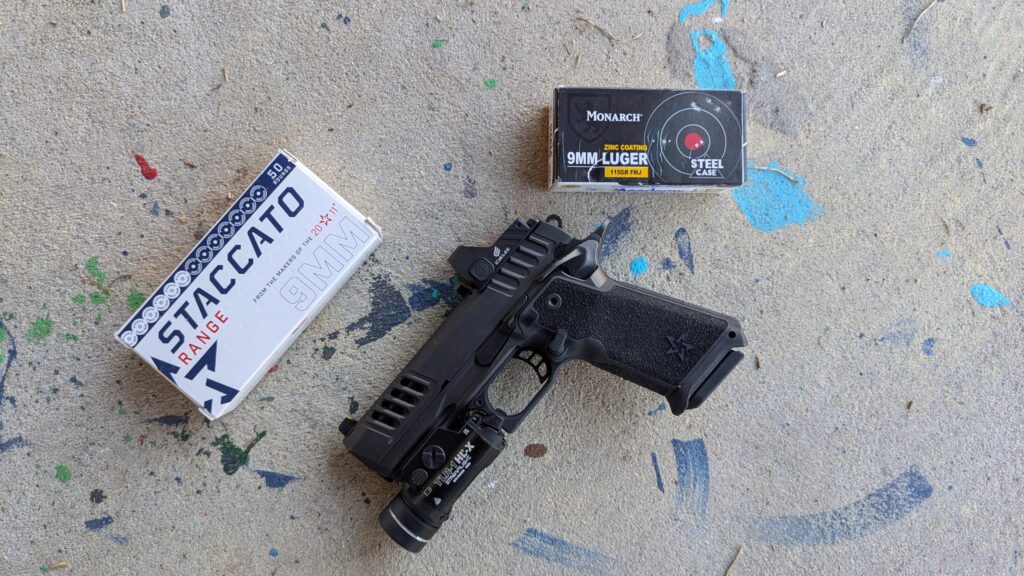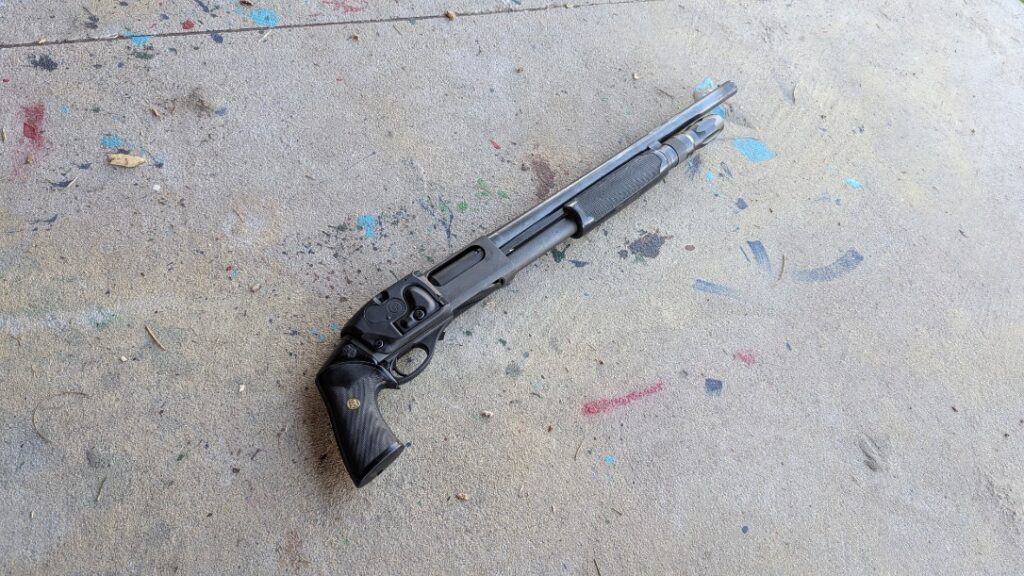A good sling goes a long way. I remember relying on my sling for a number of patrols, and it also kept my rifle tucked to my body when hitting the dirt. A good one just makes life better when it comes to wielding a long gun. We’ve written a lot about good slings, but today we are going to write all about how to optimize your sling experience with five simple things you can do today.
Get a Good Sling
What makes a good sling? Well, design is the first thing. Get a good two-point tactical sling from well-known manufacturers like Blue Force Gear, Magpul, Viking Tactics, Arbor Arms, and the other half dozen different options.
A well-made sling will last for decades. I have a Blue Force Gear Sling from 2011ish, and it’s still going strong. I personally use an Arbor Arms Dual Adjust Weapon Sling because I like the pull tab and overtighten cam combination.
Advertisement — Continue Reading Below
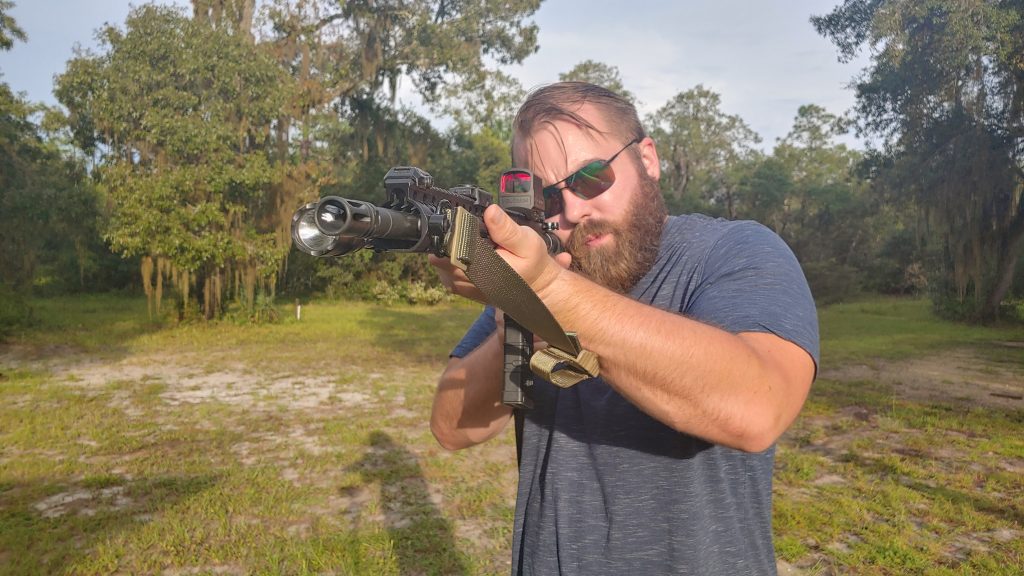
At the least, you’ll want an adjustable two-point sling with a quick pull tab to make rapid adjustments. 3-Point and 1-Point slings have fallen out of favor for reasons. 3-Point slings are giant gangly messes that are a huge hassle to deal with.
Single points offer lots of mobility but very little support. If you really like a single point for those situations, check out the Magpul convertible sling. It’s a two-point that converts to a one point. Single points suck if you have to go hands-free to climb ladders, carry wounded, or just exist with a rifle banging into your nuts.
Advertisement — Continue Reading Below
Size It Right
Sizing that nylon strap to work with both your body type and your rifle is the most obvious concern, but what about warming layers or plate carriers? Yep, you’ll need to factor those in as you adjust your sling to fit your body and your weapon. Different slings have different points of adjustment, so it’s tough to give universal instructions.
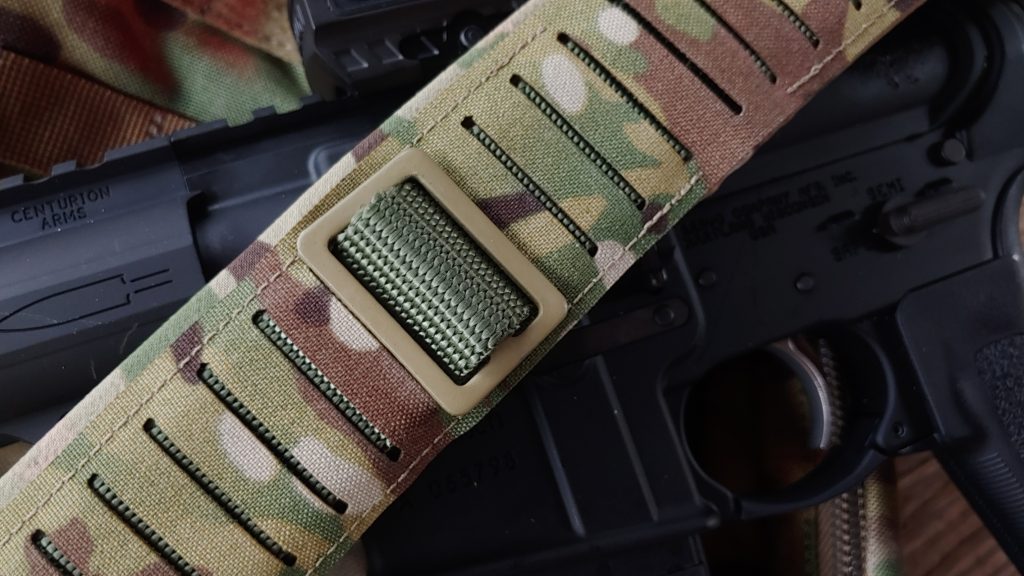
Another big reason I like the Arbor Arms Dual Adjust Weapon Sling is the rear LOP adjustment is quick and easy to change on the fly. This way, I can deal with plate carriers and layers on the fly.
Advertisement — Continue Reading Below
When sizing a sling, ensure you have properly adjusted it to provide consistent performance between both the loose setting and the tight setting. When fully loose, you should have maximum mobility, and when tightened down, you’ll likely want it hands-free. Somewhere between the two, you should be able to use tension to help stabilize your shot.
Lockback Your Triglides
After adjusting or attaching the sling to your rifle, it’s time to lockback your triglides. When you run the tail through the triglide, it seems nice and tight, right? Well, you can secure them a fair bit more by taking the tail and going in one more time to finish locking down your triglide.
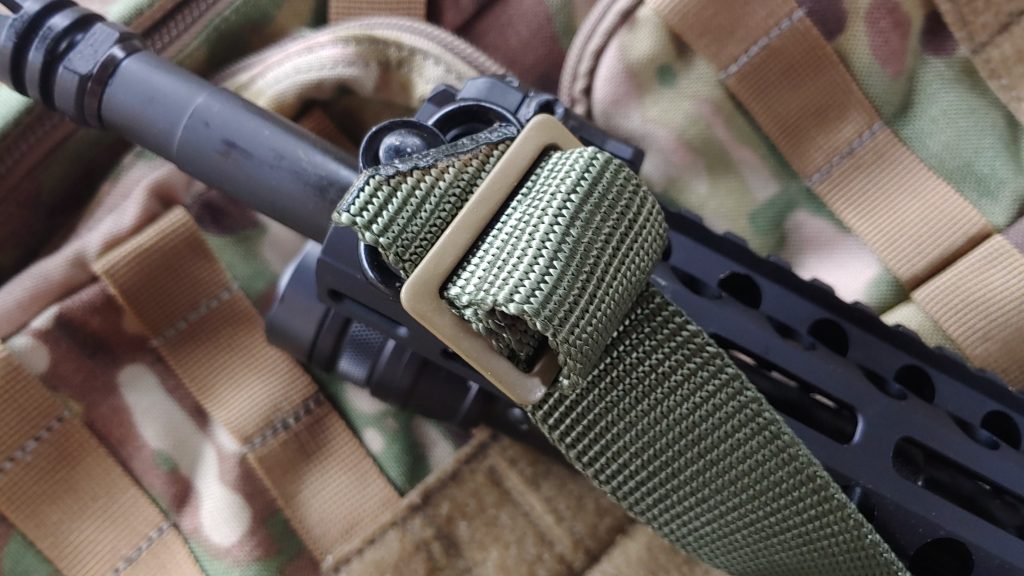
Advertisement — Continue Reading Below
This adds another layer of security to your sling and will prevent it from slipping and sliding. There is no chance for it to get stuck or caught on your gear and become slowly loosened over time. Locking back costs zero dollars and takes roughly 15 seconds to do if you spend ten seconds opening a beer and munching on a taco.
Attach the Rear Point at the Dominant Side
When you begin to attach your slings, the nondominant side will sit against your body. It feels natural to attach the rear point of the sling to the nondominant side of the sling. However, if you go over the top of the stock and attach the sling to the dominant side, you’ll open up your mobility.
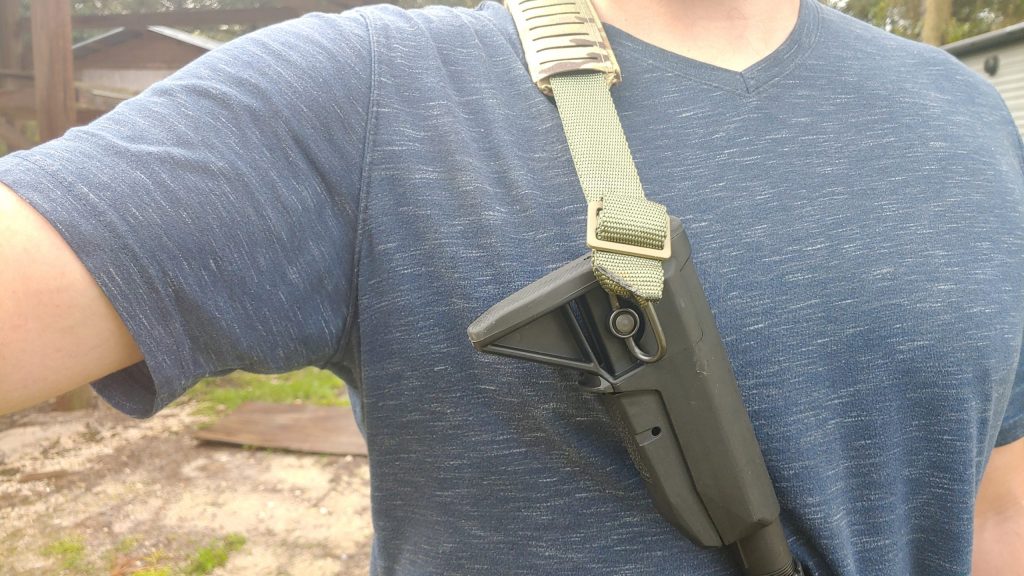
Advertisement — Continue Reading Below
Doing so will provide you a little slack that allows you to easily switch shoulders when necessary. Attaching your rear sling point to the nondominant side means you’ll need to unsling or have your neck jerked at when you try to switch shoulders.
As a righty, I attach the front point to the left side of the gun and then attach the rear sling point to the dominant side. I use a BCM stock with multiple QD points to accomplish my goal. QD points are the easiest for me, but you can also wrap the sling through webbing slots as well.
Clean the Dang Thing
I cleaned a lot of things in the Marine Corps. I pressured washed 50 caliber machine guns, scrubbed M16s until the finish wore off, and scrubbed Humvees I’d never ever seen used before. Sadly, I never cleaned my sling, I took off, tossed it in my locker, and that was it.
Advertisement — Continue Reading Below
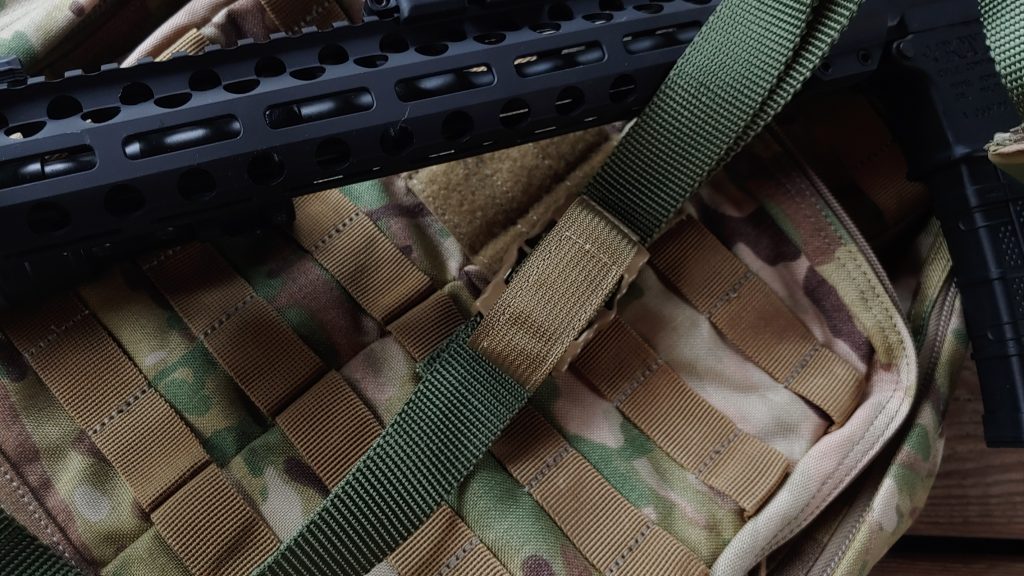
If I had been smart enough to clean it, I could’ve avoided that annoying period where it got stiff. Slings that get exposed to water, dirt, and dust will often harden over time. They are still useable but will be harder to adjust, hard to use the pull tab for rapid adjustments, and generally be less useable.
Spraying them with a little water and giving them a soak and a scrub can help prevent the dreaded stiff sling from setting in.
Advertisement — Continue Reading Below
Sling It Up
We all love our slings. If you don’t love a sling, you’ve never patrolled until your legs wanted to fall off. A good one goes a long way, and we often depend on slings for support and weapon retention. If you can optimize your experience, then why not? Hopefully, the five tips above will help optimize that experience.
